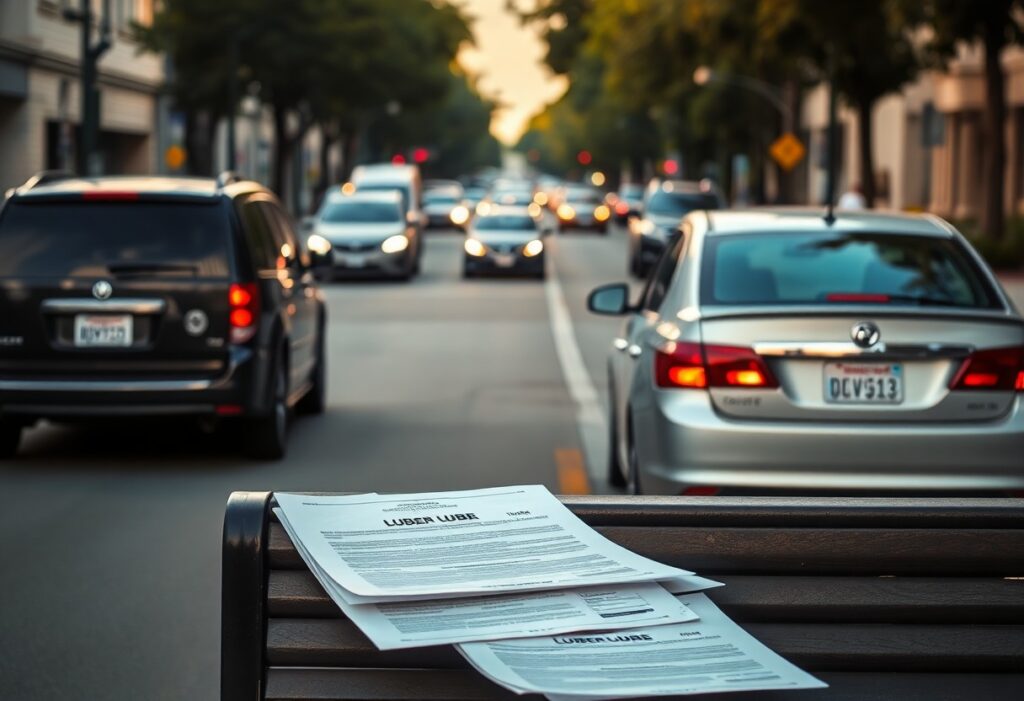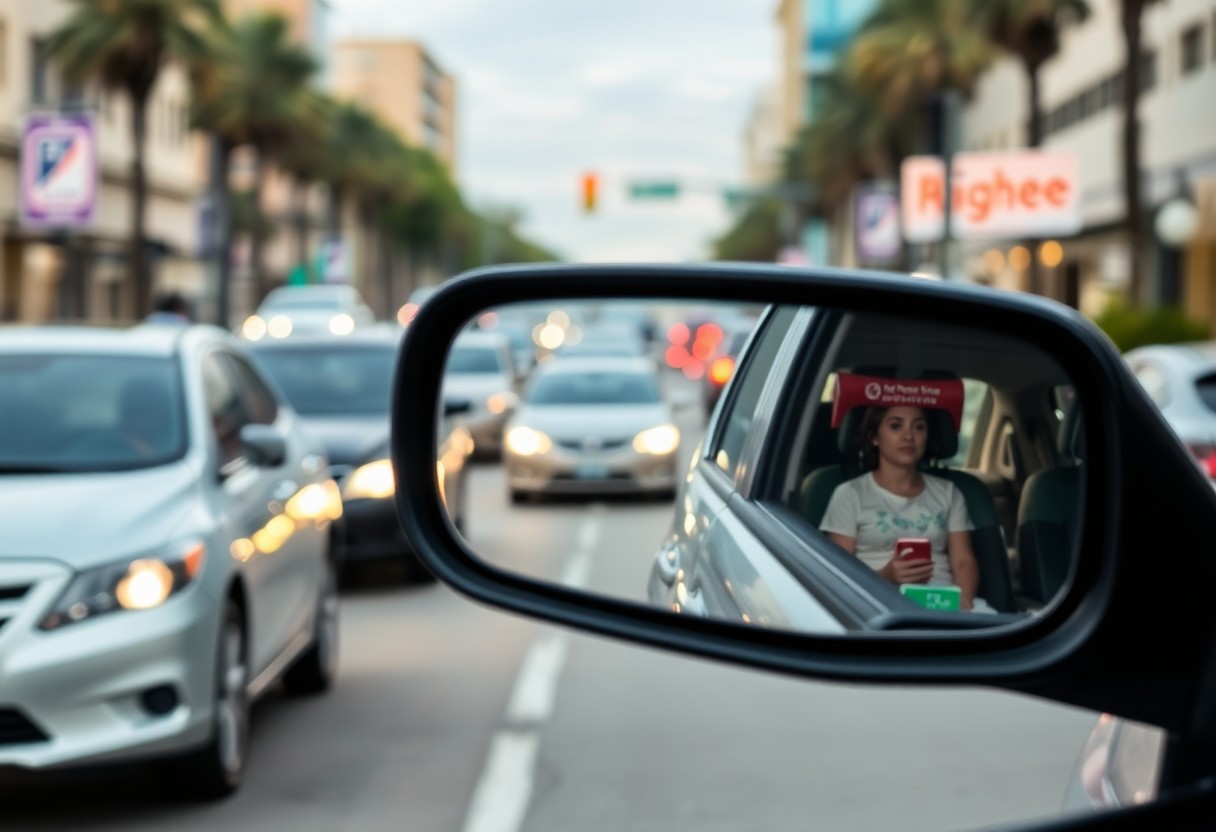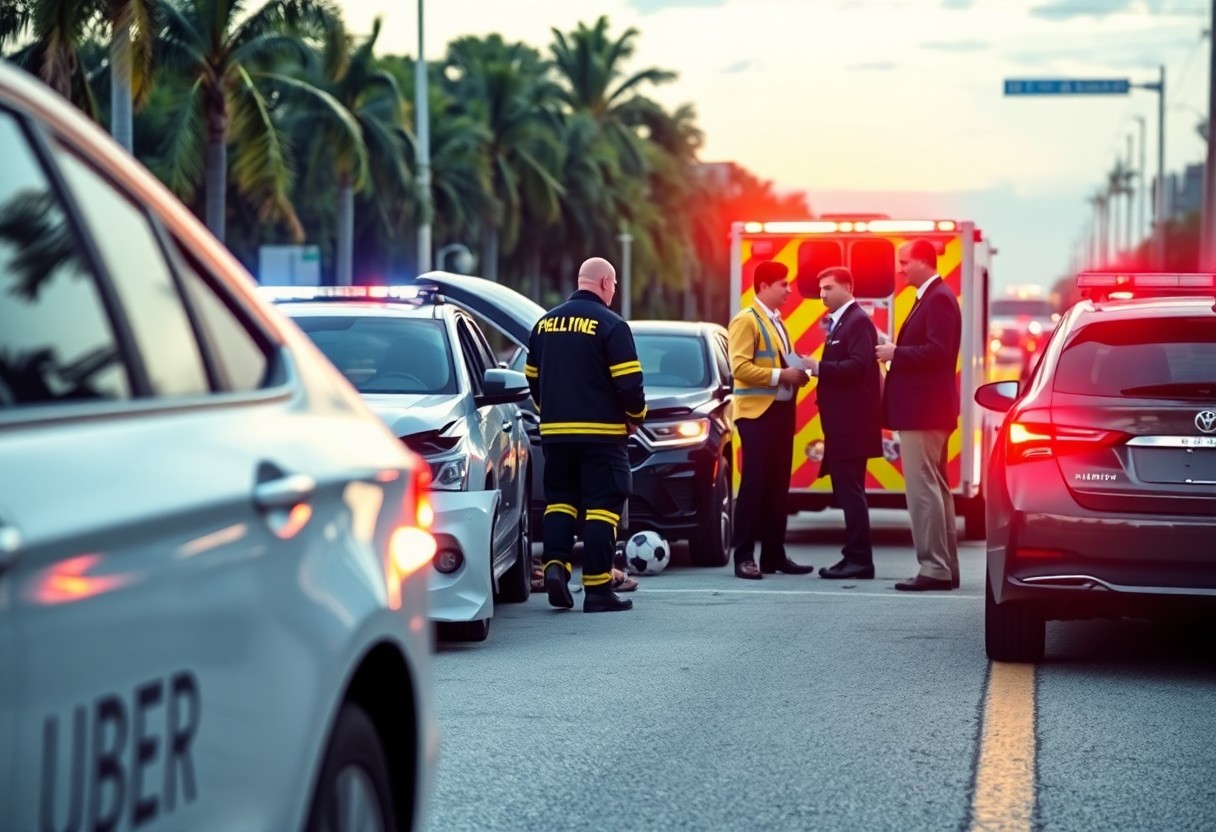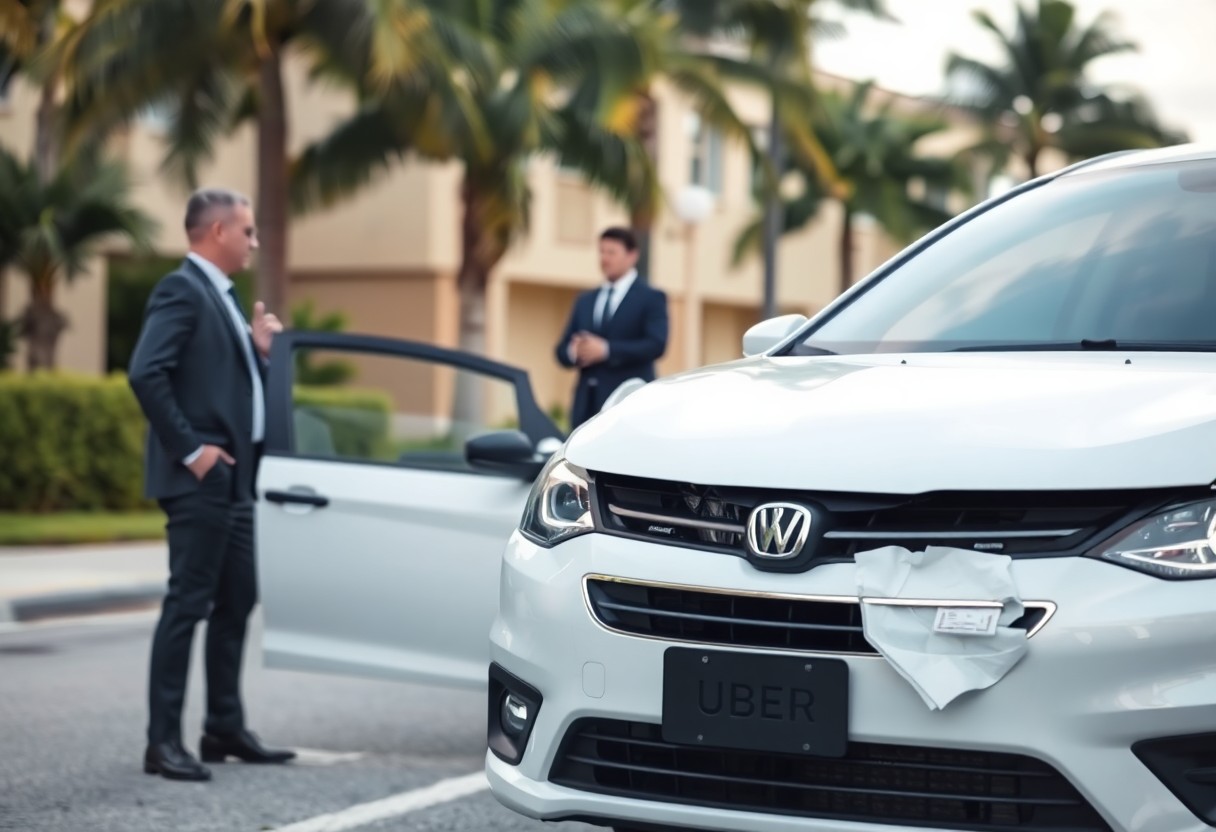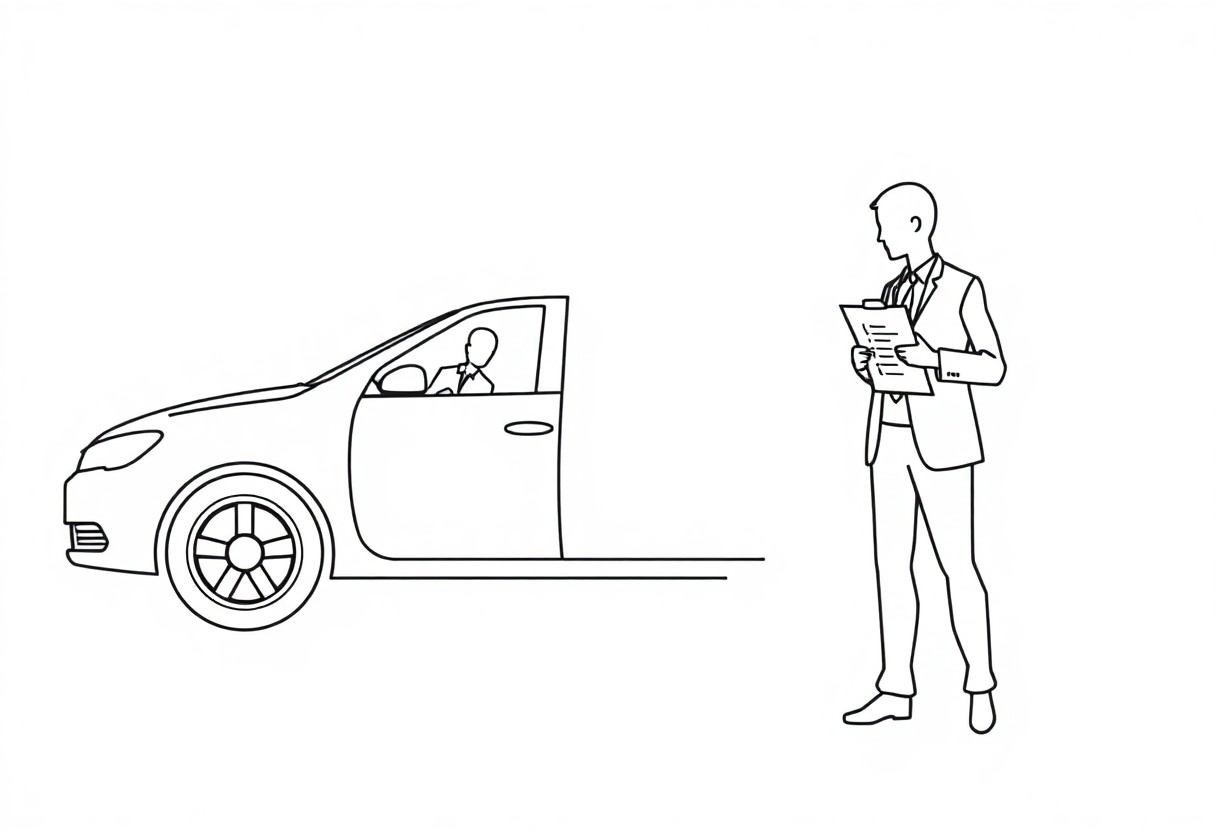Uber operates under a unique set of regulations in California that can make accidents involving rideshare vehicles particularly intricate. When you or someone you know is involved in an Uber accident, understanding these laws is vital to navigating your case effectively. You might face insurance challenges, liability issues, and different coverage levels depending on the driver’s status during the incident. This blog post will probe into the complexities of California’s rideshare laws and how they impact your potential claim, ensuring that you’re well-informed.
Key Takeaways:
- Legal Classification: California’s laws define rideshare drivers as independent contractors, complicating liability assessments in accidents.
- Insurance Coverage: Depending on their app status, Uber drivers have varying insurance coverage, affecting claims for injured parties.
- Complicated Liability: Multiple parties, including Uber, the driver, and other vehicle owners, can be involved, making it difficult to determine fault.
Overview of California’s Rideshare Laws
Before plunging into the specifics of rideshare accident cases, it is necessary to understand the overarching laws that govern rideshare services in California. The state has seen a significant rise in the use of rideshare services like Uber and Lyft, leading to a need for clearer regulations. As a result, California has established specific laws that dictate how these companies operate, the responsibilities of their drivers, and the rights of passengers. These laws are designed to protect everyone involved, but they also contribute to the complexity of rideshare accident cases.
Definition of Rideshare Services
Any form of transportation that allows individuals to request a ride via a mobile app typically falls under the category of rideshare services. Companies like Uber and Lyft connect riders with drivers using their smartphones, facilitating on-demand transportation that deviates from traditional taxi services. This model has brought both convenience and challenges in terms of regulatory oversight, insurance requirements, and liability in case of accidents.
Legal Framework Governing Rideshare Companies
Legal aspects surrounding rideshare companies hinge on a myriad of state laws and regulations that can be both beneficial and confusing. In California, rideshare companies are categorized as transportation network companies (TNCs), which subjects them to specific insurance requirements and operational guidelines. You should be aware of the three distinct insurance periods that affect liability: when the driver is logged off the app, when they are available to accept rides, and when they have a passenger. Each of these periods may determine who is responsible for any damages in an accident.
Also, rideshare companies have been mandated to provide insurance coverage that meets or exceeds state requirements, which can significantly influence the outcome of an accident case. The complexity arises because the liability may shift between the driver, the rideshare company, and sometimes even other parties involved in an accident, making it necessary for you to understand these laws to effectively navigate your situation. Having a solid grasp on these legal frameworks can empower you to make informed decisions after an incident.
Types of Uber Accident Cases
Clearly, navigating the various types of Uber accident cases requires an understanding of the unique circumstances surrounding rideshare services. These accident cases can typically be classified into separate categories that can significantly impact the legal process and outcomes. The following are the primary types of Uber accident cases:
- Passenger injuries
- Third-party injuries
- Driver-related accidents
- Accidents during the rideshare period
- Injuries from uninsured motorist actions
This overview illustrates the diverse scenarios that impact both passengers and drivers involved in Uber-related incidents.
| Type of Case | Description |
| Passenger injuries | Injuries sustained by passengers during an Uber trip. |
| Third-party injuries | Accidents affecting individuals outside of the rideshare vehicle. |
| Driver-related accidents | Accidents involving Uber drivers while off duty or during personal time. |
| Accidents during the rideshare period | Incidents that occur while the driver is en route to pick up a passenger. |
| Injuries from uninsured motorist actions | Injuries caused by drivers without insurance coverage. |
Passenger Injuries
Uber accidents can result in serious passenger injuries, raising numerous complexities in legal claims. When you are a passenger in an Uber, you are generally covered under the rideshare company’s liability insurance. However, the nature and extent of your injuries can influence how claims are filed and which parties may be held accountable. You may face challenges in collecting compensation if you sustain injuries due to the driver’s negligence, as proving liability becomes vital.
Third-Party Injuries
Types of accidents can also involve third parties, meaning they occur when non-passengers are affected. These cases encompass injuries to pedestrians, drivers, or passengers of other vehicles involved in an Uber accident. The complexities arise due to the differing liability scales depending on the responsibility of the Uber driver. For instance, if you are injured in an accident caused by an Uber driver while they were transporting passengers, the rideshare company may be liable to compensate your injuries. Understanding insurance coverage and applicable regulations can be complex when determining liability.
For instance, if the Uber driver is found negligent while operating the vehicle, you may have a stronger claim against Uber’s insurance policy. Conversely, if the driver is deemed not at fault or acting outside the scope of their employment, your claim may be directed towards their personal insurance coverage instead. Issues such as driver status, insurance policy limits, and the specifics of the accident will all be pertinent to your case. Therefore, it’s vital to gather substantial evidence and legal support to pursue a claim effectively.
Determining Liability in Uber Accidents
After an Uber accident, you may find yourself grappling with the complexities of determining liability. This process becomes particularly intricate due to the unique legal framework surrounding rideshares, where both the driver and the company may share some responsibility. You might question whether the rideshare driver was operating their vehicle according to Uber’s policies or if they were acting recklessly, which can significantly influence the outcome of your case. Understanding how California’s laws apply in these situations can be the key to improving your chances of a favorable resolution.
Rideshare Driver vs. Company Responsibility
Behind every Uber accident lies a nuanced battle over responsibility. As a passenger or another party involved, you will need to discern whether the driver was logged into the Uber app at the time of the accident, as this status plays a pivotal role in establishing liability. If the driver was actively engaged in a rideshare trip with a passenger, Uber may be held accountable for the incident. Conversely, if the driver was off-duty, your claim may primarily rest on the driver’s personal insurance.
Role of Insurance Policies
Behind the scenes of liability determinations, the rideshare company’s insurance policies add another layer of complexity. In California, Uber is required to carry insurance that covers injuries and damages when their drivers are on the app. However, the specifics of coverage will depend on whether the driver was picking up a passenger, actively transporting one, or was waiting for a ride request. Understanding the implications of these different insurance phases is imperative for you as it can affect how claims are processed and which insurance policy ultimately pays for your damages.
This means that navigating the insurance landscape can be daunting, but having a clear understanding of these policies is imperative for your case. If you are involved in an accident and the driver was on the Uber app, their insurance might cover damages up to a certain limit. Yet, if the driver was in their personal capacity, your claim would likely need to go through their personal insurance policy. Consequently, determining which insurance policy applies can directly impact your ability to claim compensation for medical expenses, lost wages, and other damages you may have incurred.
Challenges in Proving Fault
All rideshare accidents present unique challenges when it comes to determining fault, especially in California. The legal landscape is complicated due to the employment status of rideshare drivers and the various insurance policies involved. Consequently, understanding how fault is assigned in these cases is necessary for your potential compensation. You may find that key factors, such as whether the driver was transporting a passenger or app-available but offline, play significant roles in the legal outcome of your accident and your ability to recover damages.
Evidence Collection in Uber Accidents
Along with the complexities involved in establishing fault, effective evidence collection can significantly impact your case’s outcome. Gathering vital information like witness statements, police reports, and photographs of the accident scene will help strengthen your claim. Your next steps might include obtaining data from the rideshare app that can reveal critical information about the driver’s status at the time of the accident. Don’t underestimate the importance of this stage, as it sets the foundation for your pursuit of justice and compensation.
Navigating Multiple Insurance Claims
Claims that arise from Uber accidents often require you to deal with multiple insurance providers, which can complicate the claims process further. As a passenger, driver, or bystander, understanding which policies apply in your case is key. If the Uber driver was at fault, you may need to file a claim with Uber’s insurance, which can lead to disputes over liability and damages. Additionally, if another driver is involved, their insurance may also come into play, which can create a web of claims you must navigate.
For instance, if an Uber driver is at fault in your accident, their personal auto insurance policy might initially deny coverage due to their rideshare status. Consequently, you will need to rely on Uber’s insurance, which provides coverage only during specific periods of the ride. This layered approach can lead to confusion and delays as you gather evidence and negotiate settlements with multiple insurance companies. Clear communication and documentation of everything are vital while attempting to navigate this challenging process.
Recent Legal Developments in Rideshare Regulations
Now, as the rideshare industry continues to evolve, legal frameworks surrounding Uber and similar platforms have also adapted. California has introduced various regulations to clarify the responsibilities of rideshare drivers and companies, which affects how accident cases are handled. These changes often aim to improve rider safety and ensure that drivers are adequately insured, but they also bring a layer of complexity to the litigation process. Understanding these legal developments is vital if you find yourself involved in a rideshare accident, as the rules governing liability may not be as straightforward as they seem.
Changes in Liability Laws
The introduction of new liability laws in California has made it not only important but necessary for you to fully understand how these changes can impact your accident case. Under the amended regulations, rideshare companies can be held more accountable for the actions of their drivers. This shift means that you may have more legal avenues for seeking compensation, but it also means that the determination of fault may involve additional layers of negotiations and legal scrutiny. This complexity calls for you to collaborate closely with a legal professional specialized in rideshare laws.
Impact of New Legislation on Accident Claims
Below, you’ll find that the recent legislative changes provide both challenges and opportunities for managing accident claims. For example, some new laws require rideshare companies to maintain higher insurance coverage limits during specific phases of a trip, expanding the pool of resources available for victims. However, this also creates a more intricate claims process, where multiple parties may be involved in a case, complicating efforts to establish liability and secure the compensation you deserve.
Recent updates in California’s legislative landscape have mandated that rideshare companies maintain increased insurance coverage, which can ultimately benefit your claim process. However, this also necessitates navigating a more complicated web of liability, as you may find yourself dealing with not just the rideshare driver, but potentially the company itself and its insurance providers. Consequently, it becomes vital for you to stay informed and seek guidance to effectively navigate the complexities of these legal alterations while pursuing your rights.
How to Navigate Uber Accident Claims
Steps to Take After an Accident
Against the backdrop of an accident involving an Uber vehicle, your immediate actions can heavily influence the outcome of any future claims. First, ensure that you and others involved receive medical attention if necessary. Next, gather information at the scene, including the names and contact details of involved parties, photos of the accident scene, and eyewitness accounts. This documentation is vital for establishing a strong case. If you are able, notify the police so they can file an official report, which may serve as necessary evidence later.
Importance of Legal Representation
The landscape of rideshare laws in California is complex, making it even more important to have experienced legal representation by your side. Navigating the claims process can be challenging, particularly when determining liability, dealing with insurance companies, and managing potential claims against Uber. A qualified attorney will understand these intricacies and work diligently to protect your rights.
After an incident, having a knowledgeable attorney increases your chances of receiving fair compensation for your injuries and damages. They can help you analyze your case, advise you on your options, and ensure that you meet any deadlines associated with filing claims. Engaging with legal expertise not only alleviates the burden but also enhances your prospects of securing the compensation you deserve in what can be a complicated accident environment.
Conclusion
Summing up, navigating the complexities of Uber accident cases in California involves understanding the unique rideshare laws that govern these situations. With various legal classifications and determinations about driver status, your ability to seek compensation can significantly differ depending on whether the driver was logged into the app, actively accepting rides, or off-duty at the time of the accident. These intricacies can complicate your claims process and may require legal expertise to identify the right avenues for redress.
Additionally, California’s legal structure, including insurance requirements and liability considerations, adds layers of complexity that can impact your case. You may find that multiple parties are involved, including Uber and the driver, which can affect liability and compensation amounts. Engaging with professionals who have a strong understanding of these laws can guide you through this convoluted landscape, ensuring that you are well-informed and prepared to tackle your claim effectively.


